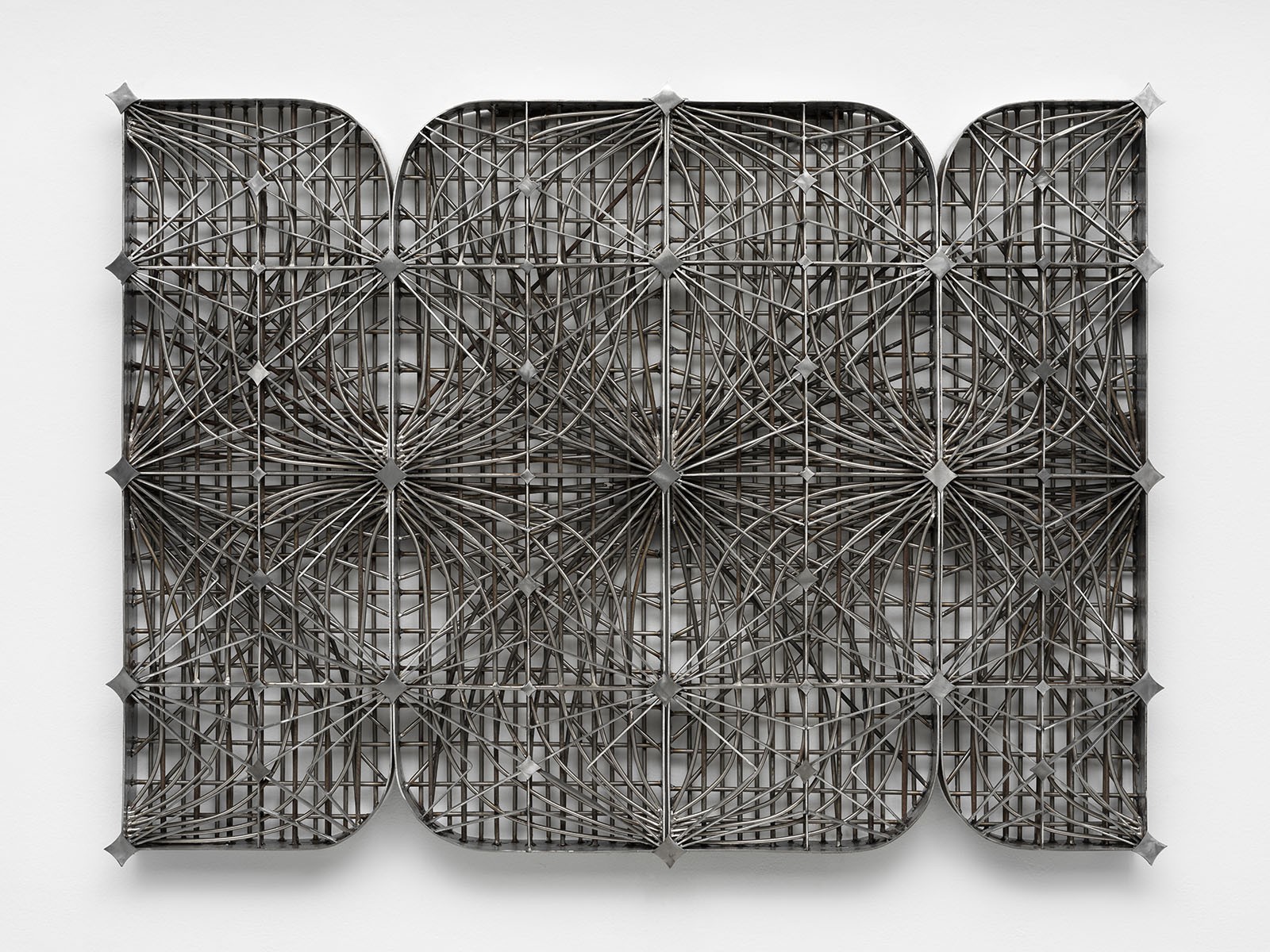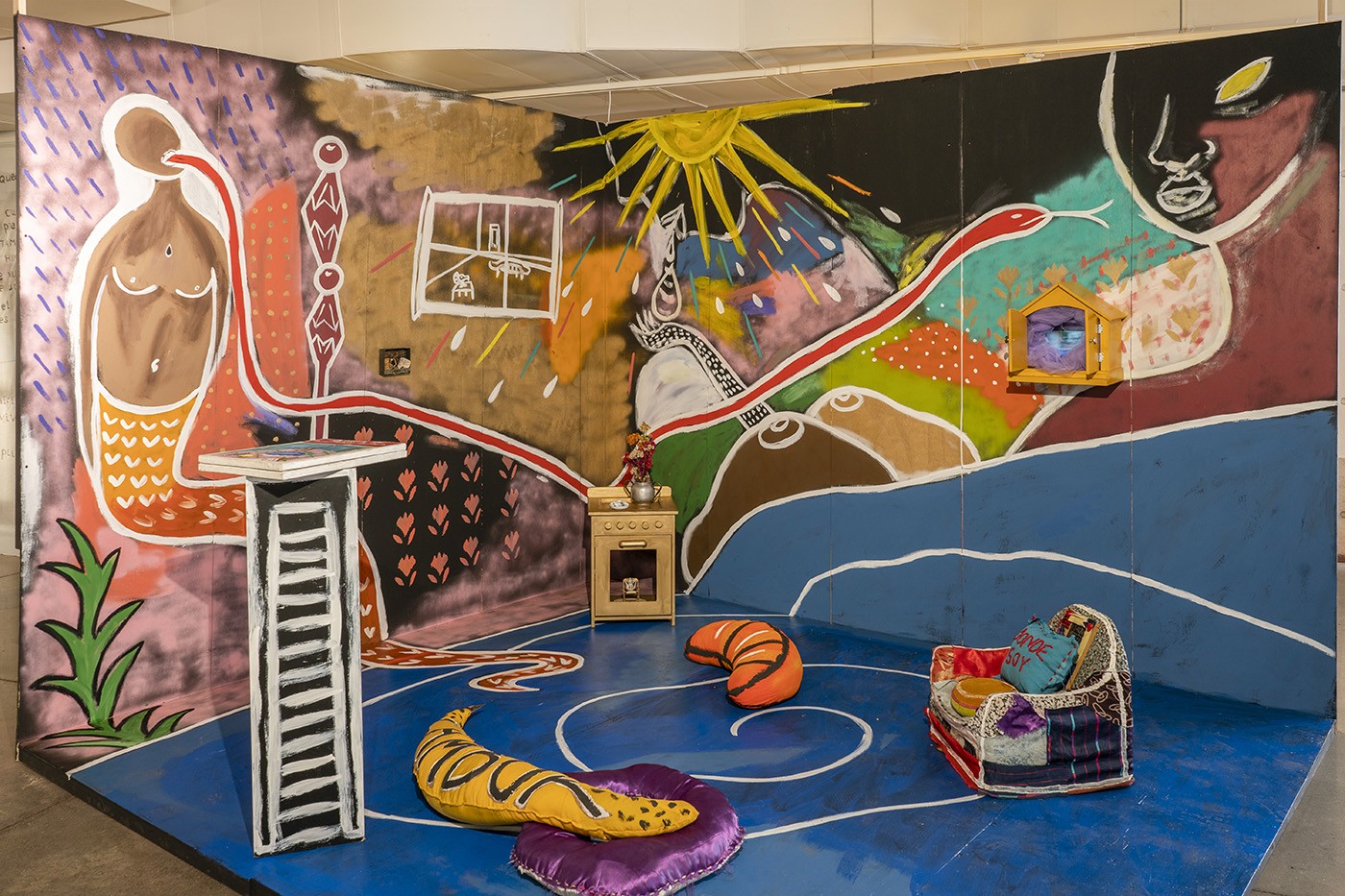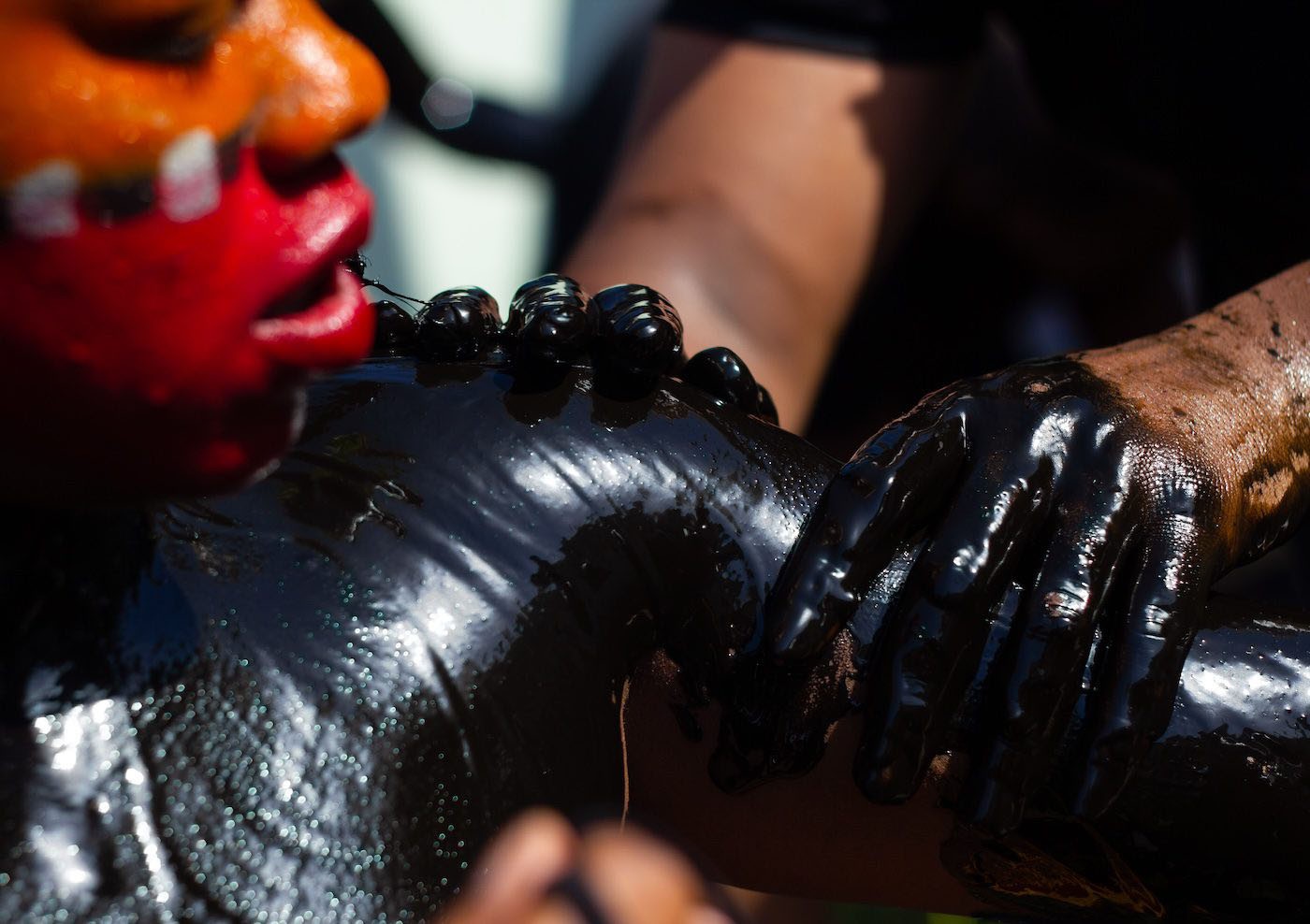Jelili Atiku: “Performative practice is their own heritage”

12 November 2013
Magazine C& Magazine
8 min read
This week the 1st AFiRIperFOMA Biennial is taking place in Harare: C& talked to the artistic director and performance artist Jelili Atiku.
C&: Tell us a bit about your artistic journey. When and how did it begin?
Jelili Atiku: I was trained at the great Zaria Art School - Ahmadu Bello University, in northern Nigeria. I was trained as a sculptor there and then received my Master’s degree in Visual Arts from the University of Lagos. It was during my master’s studies that I felt that I needed the presence of my body as a medium. That’s when I began making performances. This was in 2005.
C&: Can you remember your very first performance?
JA: It was at the University of Lagos. The title of the performance was Ewawo – The Prisoner (ewawo in Yoruba means come and see). At the time I was doing research on the state of Nigerian prisons and the penal system. In my performance, I tried to re-enact the situation of Nigerian prisons by using materials from the University, such as metal bed frames, out of which I built a kind of cell. In 1998, I visited a Nigerian prison while I was doing my national youth service. This experience grew in me like a protest, as a campaign for prison reform in Nigeria.
https://vimeo.com/78156410
C&: Why do you think performance plays such an important role in African art?
JA: If you look at the history of Africa, the artistic culture is performative. All the sculptures and other cultural productions...most of them were created for performance. This was discontinued when the Europeans came during colonialism, so the material works were separated from performance. And once they were separated, Africans kind of lost their confidence to bring them back together. Modern artists didn’t and still don’t have the confidence either; they don’t see performance as a form of art, as a form they actually depart from. So now we’re trying to re-activate this by hosting the Biennale!
C&: How would you describe your approach to performance?
JA: For most of my performances I use the Egungun method. Egungun is generally translated as masquerade, although this word does not capture the essence of Egungun. In Egungun, the body is central. Many external objects are put on, wrapped around the body; there is a lot of action; it can be theatrical or musical, all kinds of different things. As a matter of fact, Egungun performance doesn’t have any boundaries; it can spill into literature, into theatre, into everything. It is an African kind of performance. It originated with the Yoruba and other tribes in Africa.
C&: So you want to bring it back or, as you say, re-activate it?
JA: It’s still widely practiced! I’m just trying to say that performance itself is deeply rooted in our culture. And yet many African artists don’t engage in performance.
C&: When did you decide to re-activate performance in the form of a biennale?
JA: Last year I travelled a lot on the continent; in most of the places, the African cities I go to, I try to do my performances. I see the people’s reactions: “You work like a European; it’s a European practice!” This made me wonder. I told them that this kind of work exists in their own culture. It’s just a way of re-interpreting our own visual language as they do in Europe! So there is no difference. I decided that now is the best time for us to begin creating a gathering of let’s say 50 performance artists coming to Africa at the same time. That will allow us to influence the scene. People will hopefully know soon that performance is part of us.
C&: So when was your idea born?
JA: The idea for the biennale was born before RAVY 2011 (Rencontres des Arts Visuels de Yaoundé) in Cameroon, but it was there that we actually started discussing it. I did a performance at RAVY; there were also other African artists present. After my performance, some of them began asking questions, there was a real discussion. Somebody for example said that my performance was like a ritual and that these are the things they are trying to campaign against. He asked why I was engaging in old practices that keep Africans from growing. My response was: “What is ritualistic about art?” He didn’t have an answer. So that’s how the idea of creating a biennale came about, a biennale where performance artists get the chance to challenge set ideas and the status quo.
C&: And why did you opt for a biennale, instead of a festival for example?
JA: We created a biennale because we wanted to have the event every two years on a regular basis. It’s going to be rotational; it’s not going to be stationary but rather dislocated. This one is in Harare, Zimbabwe; the next one will be in another country. We will need a two-year-interval for us to prepare. We will also need plenty of time to work on the documentation since performance is ephemeral, is marked in the memory.
C&: You said you were going to film the performances? It's incredibly important to build an archive, isn’t it?
JA: Yes indeed. We have a documentation team in charge of the videos, the writing. Everything will be documented. There is not much documentation in Africa. In order to preserve and show the history of art on the continent, we want to avoid that mistake.
C&: You will be doing the biennale without any funding, which is truly amazing and brave. How does the organization work under those circumstances?
JA: It’s crazy to put on a biennale like this without any funding. That’s one good thing about Africa: there is such a thing as community effort, i.e., everyone assisting each other. We are trying to adopt that technique. We asked the participants to seek their own funding. Most of the speakers for example got funding from their own institutions or associations. There is also the First Floor Gallery Harare that is letting us use their space; the University of Zimbabwe is as well. And the Goethe Institut supported the video exhibition segment. There are people who have agreed to pay for their own travel, their own accommodation. The only thing we need to do actually is provide some refreshments at the opening, print the programme and cover the administrative expenses. Some of us as volunteers have agreed to contribute to these costs.
As you know, the hyper-capitalist financial system we live in doesn’t recognize the beginner. After this pioneering biennale, we will seek some sponsorship opportunities. I am sure that we will get a lot of sponsors for the next one.
C&: Can you share the ideas behind the line-up of artists?
JA: I’ve completely relied on my connections. Everyone is excited about Africa. Despite the lack of funding, they still want to come. I’m super happy about this. I’ve received e-mails from people who wanted to come without even being invited. We just keep ourselves open and don’t make any selections. For everyone who couldn’t get funding we decided to let them film their work to be shown as visuals during the biennale, and are also given them the chance to present their work via Skype.
C&: Do you have a main theme for the biennale?
JA: We haven’t given the artists any direction for their performances. Participating artists are free to work from different directions; on memory, identity, etc. For instance, my own performance will be about immigration law in Africa, how as an African, you have to go through certain procedures to get a visa for travel within Africa even though there is the African Union, so I want to question this. However, the biennale will be held under the general title of “Mnemonic.” A mnemonic is a device used to support the memorization of ideas and materials – an aid to human memory. The title is to be understood as an allegory of the powerful multi-dimensionality of the continent’s past and contemporary history.
C&: What do you hope this biennale will change in the African art scenes?
JA: The dream is to make people understand that performative practice is actually their own heritage, to be proud of it. For example, in most higher education institutions in Africa, apart from South Africa, contemporary performance art is not included in the curriculum. This art form is actually from Africa, it evolved from here, we should try to cherish and to reconstruct it.
.
The 1st AFiRIperFOMA Biennial: Contemporary Performance/Live Art Festival in Africa
08 NOVEMBER 2013 - 22 NOVEMBER 2013, Harare and Bulawayo, Zimbabwe.
Programme
The Biennial will comprise a main and a parallel programme, which includes workshops for upcoming performance artists, exhibitions of documentation of selected performance artists previous works, and works from the preliminary workshops, symposium/screening on performance practice in Africa and a performance festival. View full programme here
.
Interview by Julia Grosse
Read more from






